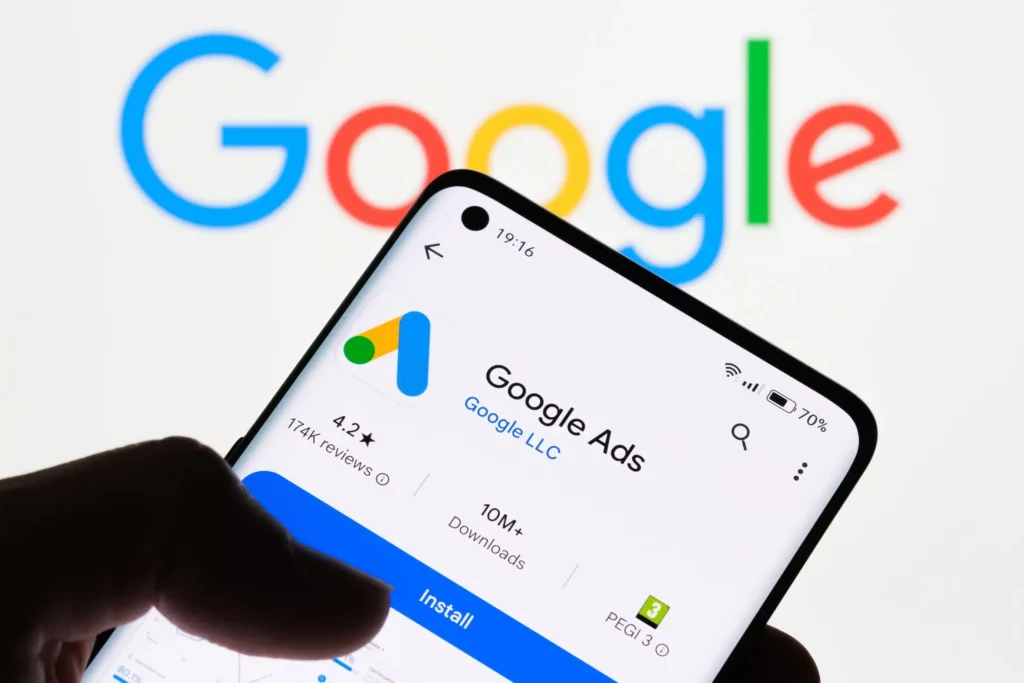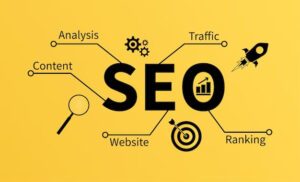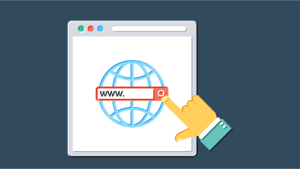The numbers don’t lie, and they’re painful. Google Ads costs have surged 40% year-over-year across major industries, with some sectors seeing even steeper increases. For Toronto businesses already struggling with inflation and economic uncertainty, this price spike feels like a knockout punch. Cost-per-click rates that were manageable last year now threaten to devour entire marketing budgets. But here’s what the panic-stricken headlines aren’t telling you: while costs have risen, smart advertisers are actually improving their ROI. The difference between those drowning in expensive clicks and those thriving despite higher costs comes down to strategy, not spending. Today, we’re revealing exactly how successful businesses are winning the Google Ads game even as prices skyrocket—and how you can implement these strategies starting today.
The Real Story Behind the 40% Increase
Understanding why costs increased helps identify solutions. The surge isn’t random—it’s driven by predictable factors. Post-pandemic digital acceleration pushed more businesses online, intensifying competition for the same keywords. Industries that barely advertised online three years ago now bid aggressively for digital visibility. This increased demand meets Google’s relatively fixed ad inventory, creating classic supply-demand price pressure.
Algorithm changes compound the problem. Google’s shift toward automated bidding strategies, while powerful, tends to push costs higher as algorithms compete against each other. The promise of “maximizing conversions” often translates to “maximizing spend” without proper constraints. Many advertisers unknowingly fuel the price increase by accepting Google’s optimization suggestions without understanding the cost implications.
Economic factors add another layer. Inflation doesn’t just affect physical goods—digital advertising costs rise too. Businesses desperate to maintain revenue during uncertain times bid more aggressively, creating bidding wars that benefit only Google. The result? Average cost-per-click in competitive industries like legal, insurance, and home services now exceeds $50, with some keywords commanding over $100 per click. At these rates, traditional web design and development without conversion optimization becomes a luxury few can afford.
The Quality Score Revolution: Your Secret Weapon
While everyone obsesses over bidding strategies, smart advertisers focus on Quality Score—Google’s rating of your ads’ relevance and landing page experience. Here’s the game-changer most miss: improving Quality Score from 5 to 10 can reduce costs by 50% while improving ad position. This means you could pay less than competitors while appearing above them. It’s the closest thing to a cheat code in Google Ads.
Quality Score improvement starts with relevance alignment. Your keywords, ads, and landing pages must tell a cohesive story. Generic landing pages that serve multiple ad groups destroy Quality Score. Instead, create dedicated pages for each ad group that mirror the search intent and ad messaging precisely. A plumber advertising “emergency drain cleaning” needs a landing page about emergency drain cleaning—not general plumbing services.
The technical aspects matter more than ever. Page speed, mobile optimization, and user experience directly impact Quality Score. Every second of load time costs points. Every confusing navigation element reduces relevance. Smart businesses are investing in landing page optimization before increasing ad budgets, often seeing 30-40% cost reductions from improvements alone. This holistic approach to content marketing ensures every dollar spent on ads works harder.
The Negative Keyword Goldmine: Stop Paying for Junk
Here’s a shocking statistic: the average Google Ads account wastes 25-40% of budget on irrelevant clicks. With costs up 40%, this waste becomes catastrophic. The solution lies in aggressive negative keyword management—a strategy most advertisers neglect after initial setup. Smart advertisers treat negative keywords as importantly as target keywords, constantly refining to eliminate waste.
Mining search term reports reveals expensive surprises. That broad match keyword you thought targeted “Toronto accounting services” might be triggering searches for “free accounting courses” or “accounting jobs”—expensive clicks with zero conversion potential. One client discovered they’d spent $5,000 monthly on clicks from people searching for their competitor’s customer service number. Adding comprehensive negative keywords cut their costs by 35% overnight.
The negative keyword strategy extends beyond obvious exclusions. Consider search intent modifiers that indicate non-buyers: “free,” “jobs,” “salary,” “course,” “DIY,” “tutorial.” Industry-specific exclusions matter too. B2B companies should exclude consumer-focused terms. Local businesses must exclude geographic areas they don’t serve. This precision targeting ensures your increased costs go toward genuine prospects, not curiosity clicks.
Audience Targeting Mastery: Quality Over Quantity
The old spray-and-pray approach to Google Ads died with the cost increase. Success now requires laser-focused audience targeting that prioritizes quality over reach. Smart advertisers are shrinking their targeting to increase their results—a paradox that confuses traditional marketers but delights those seeing improved ROI despite higher costs.
Customer Match audiences transform Google Ads from prospecting to precision targeting. Upload your customer email lists and target similar users—people who look like your best customers. These audiences convert at 2-3x higher rates than broad targeting. Layer in demographic and interest targeting to further refine. A Toronto home renovation company targeting “similar to past customers + homeowners + interested in home improvement” sees 5x better ROI than broad keyword targeting alone.
Exclusion audiences prove equally powerful. Exclude past customers from new customer campaigns. Remove low-value segments identified through analytics. Block geographic areas with poor conversion history. This selective approach means paying more per click but generating far more per dollar spent. When combined with strategic SEO for organic visibility, paid and organic work together to dominate valuable search results.
The Landing Page Profit Multiplier
Sending expensive traffic to mediocre landing pages is like pouring water into a leaky bucket. With clicks costing 40% more, landing page optimization becomes non-negotiable. Yet most businesses still send ads to homepage or generic service pages, wasting the intent-match that justified the click cost. The math is simple: doubling your conversion rate effectively halves your cost per acquisition.
Conversion-focused landing pages follow predictable patterns. Clear headlines that match ad copy. Benefit-focused content that addresses search intent. Trust signals like testimonials and certifications. Prominent calls-to-action that reduce friction. Mobile optimization that loads instantly. These aren’t advanced tactics—they’re fundamentals that many ignore while chasing complex bidding strategies.
Testing transforms good landing pages into great ones. A/B test everything: headlines, images, button colors, form fields, trust signals, value propositions. Small improvements compound. A 2% conversion rate becoming 4% doesn’t sound dramatic until you realize it cuts your effective cost-per-click in half. Smart businesses now allocate 20-30% of ad budget to landing page optimization, recognizing that better conversion rates beat higher budgets.
Alternative Strategies: Beyond Search Ads
With search ad costs skyrocketing, smart advertisers diversify into less competitive Google Ads formats. YouTube ads offer massive reach at fraction of search costs. Display remarketing keeps your brand visible without premium click prices. Shopping ads for e-commerce often deliver better ROI than text ads. Performance Max campaigns, while automated, can find cost-effective conversions across Google’s entire network.
Google’s Discovery ads represent an underutilized opportunity. These visual ads appear in Gmail, YouTube home feed, and Google Discover, reaching users during browsing rather than active search. Cost-per-click often runs 70% lower than search ads while maintaining quality traffic. The key lies in compelling visuals and benefit-focused copy that interrupts passive browsing.
Local campaigns deserve special attention for location-based businesses. These campaigns optimize across Google’s properties to drive store visits and calls, often at lower costs than traditional search campaigns. Combined with social media marketing for community building, businesses create multiple touchpoints without relying solely on expensive search clicks.
The Automation Advantage: Smart Bidding That Actually Works
Google pushes automated bidding aggressively, and for good reason—it works when properly configured. But “set and forget” automation leads to budget hemorrhaging. Smart advertisers use automation as a tool, not a replacement for strategy. The key lies in proper constraints, continuous monitoring, and strategic manual interventions.
Target CPA (Cost Per Acquisition) bidding seems magical—tell Google your desired cost per conversion, and algorithms optimize accordingly. Reality proves messier. Without proper conversion tracking, sufficient data, and realistic targets, the algorithm flounders. Start with manual bidding to establish baselines. Implement automated bidding only after accumulating 30+ conversions monthly. Set conservative targets initially, gradually becoming more aggressive as the algorithm learns.
Portfolio bid strategies unlock advanced optimization. Instead of optimizing campaigns individually, portfolio strategies optimize across campaigns toward shared goals. This allows strong performers to subsidize experimental campaigns, maximizing overall ROI. One e-commerce client reduced average CPA by 45% by implementing portfolio strategies across their product categories, letting seasonal winners support year-round products.
Budget Allocation: The 80/20 Principle
With higher costs, budget waste becomes intolerable. The Pareto Principle applies strongly to Google Ads—80% of results typically come from 20% of keywords, ads, or campaigns. Identifying and nurturing these top performers while ruthlessly cutting underperformers transforms ROI even with increased costs.
Regular account audits reveal shocking waste. Keywords with hundreds of clicks but no conversions. Ad groups consuming budget without contributing to business goals. Campaigns targeting vanity metrics rather than revenue. One brutal audit often recovers 30-40% of budget for reallocation to proven winners. This isn’t optimization—it’s triage, and it’s essential when every click costs more.
Dayparting and device bidding adjustments squeeze maximum value from rising costs. If conversions cluster during business hours, why pay premium prices for 3 AM clicks? If mobile converts poorly for your business, reduce mobile bids. These micro-optimizations compound into macro improvements. Smart advertisers adjust bids by hour, day, device, location, and audience, ensuring premium prices only for premium prospects.
The Competitive Intelligence Edge
Your competitors face the same cost increases. Understanding their responses provides strategic advantages. Tools like Auction Insights reveal who you’re competing against, their impression share, and relative positions. This intelligence guides strategic decisions—when to compete directly versus finding less contested opportunities.
Competitor ad monitoring reveals tactical insights. What messaging are they testing? Which landing pages convert well enough to justify continued spending? What offers compel clicks despite high costs? This isn’t about copying—it’s about understanding the competitive landscape to identify differentiation opportunities. If everyone offers “free consultations,” perhaps “instant quotes” or “same-day service” provides the edge.
The smartest response to increased competition might be avoiding it entirely. While competitors battle for expensive head terms, long-tail keywords often deliver better ROI. Geographic modifiers, specific service variations, and question-based queries face less competition. A law firm targeting “personal injury lawyer” faces brutal competition, but “motorcycle accident lawyer in North Toronto” might deliver profitable clicks at reasonable costs.
Your 30-Day Cost Recovery Plan
Complaining about increased costs won’t improve ROI. Action will. Start with a comprehensive audit: identify wasted spend, poor Quality Scores, and underperforming elements. Document baseline metrics before implementing changes. This disciplined approach ensures you measure improvement, not just activity.
Week 1: Attack waste. Implement negative keywords, pause underperforming campaigns, and eliminate irrelevant placements. Week 2: Improve Quality Scores through ad relevance and landing page optimization. Week 3: Test new audiences and alternative campaign types. Week 4: Implement automation improvements and competitive positioning. This systematic approach typically recovers the 40% cost increase through efficiency gains alone.
Set realistic expectations. Some businesses won’t maintain previous volumes at higher prices—and that’s okay. Fewer, higher-quality clicks often generate better business results than high-volume, low-quality traffic. Focus on profit, not vanity metrics. One client reduced clicks by 50% while increasing revenue 20% by focusing exclusively on high-value conversions.
Conclusion: Expensive Clicks, Smarter Strategies
Google Ads’ 40% cost increase isn’t a death sentence—it’s a wake-up call. The days of lazy advertising supported by cheap clicks have ended. This new reality rewards strategic thinking, technical excellence, and continuous optimization. Businesses that adapt will find opportunities in the chaos, while those clinging to old methods will price themselves out of the market.
The strategies outlined here aren’t temporary fixes—they’re fundamental improvements that would benefit your campaigns regardless of cost changes. By implementing these approaches, you’re not just surviving the price increase; you’re building a more resilient, profitable advertising system. The businesses thriving despite higher costs share one trait: they stopped complaining and started optimizing.
The question isn’t whether you can afford increased Google Ads costs—it’s whether you can afford not to adapt your strategy. Every day you delay optimization is money wasted on inefficient campaigns. Your competitors are either figuring this out or failing. Which group will you join?
Ready to transform rising Google Ads costs from a crisis into an opportunity? ByteInspired specializes in advanced Google Ads optimization that delivers profitable results regardless of market conditions. Our strategic approach has helped Toronto businesses reduce costs by 35% while increasing conversions by 50% or more. Don’t let rising costs destroy your marketing ROI. Contact us today to discover how smart strategy beats bigger budgets every time.
To visit our social media please click on Facebook and Instagram





